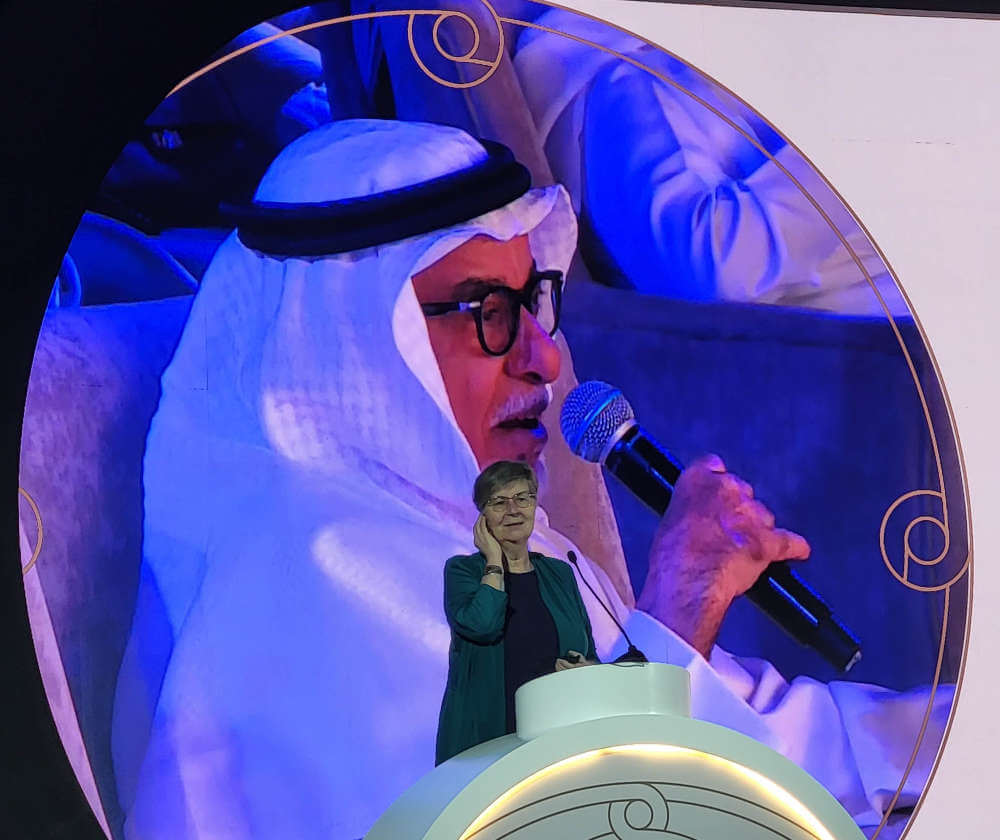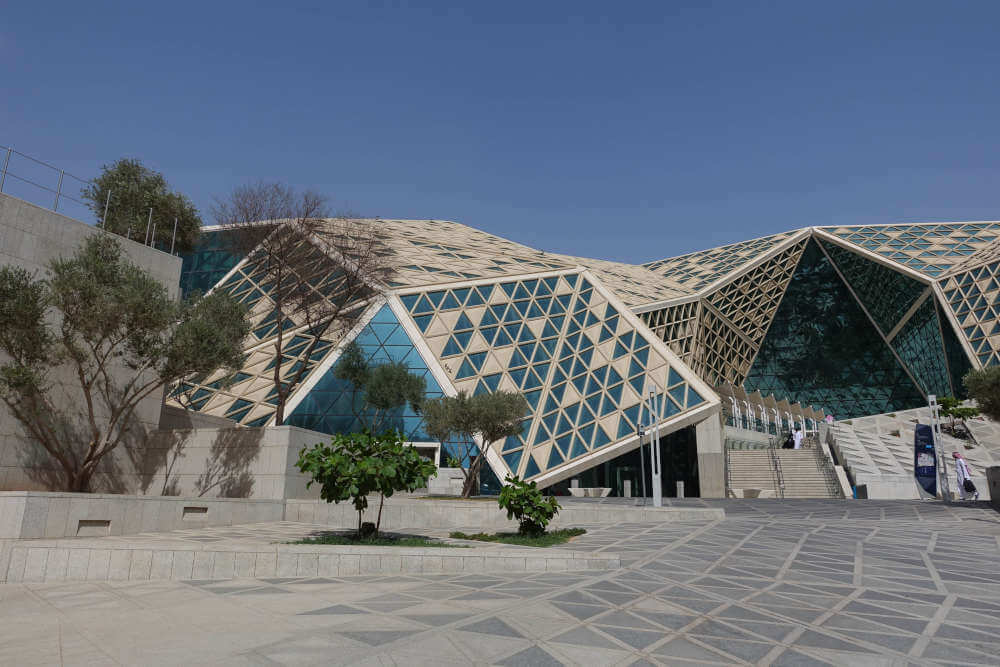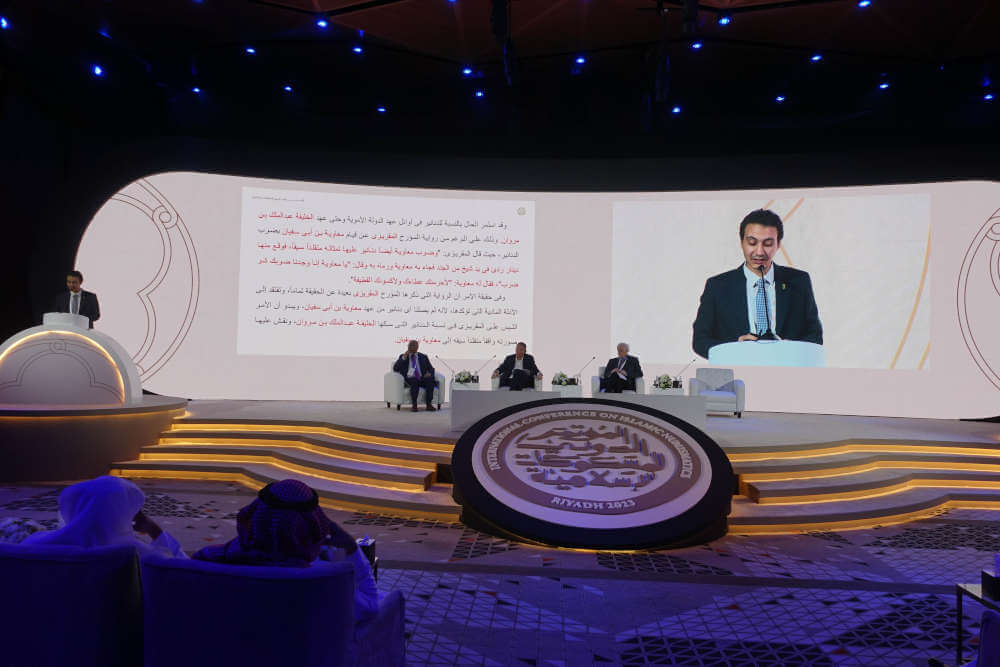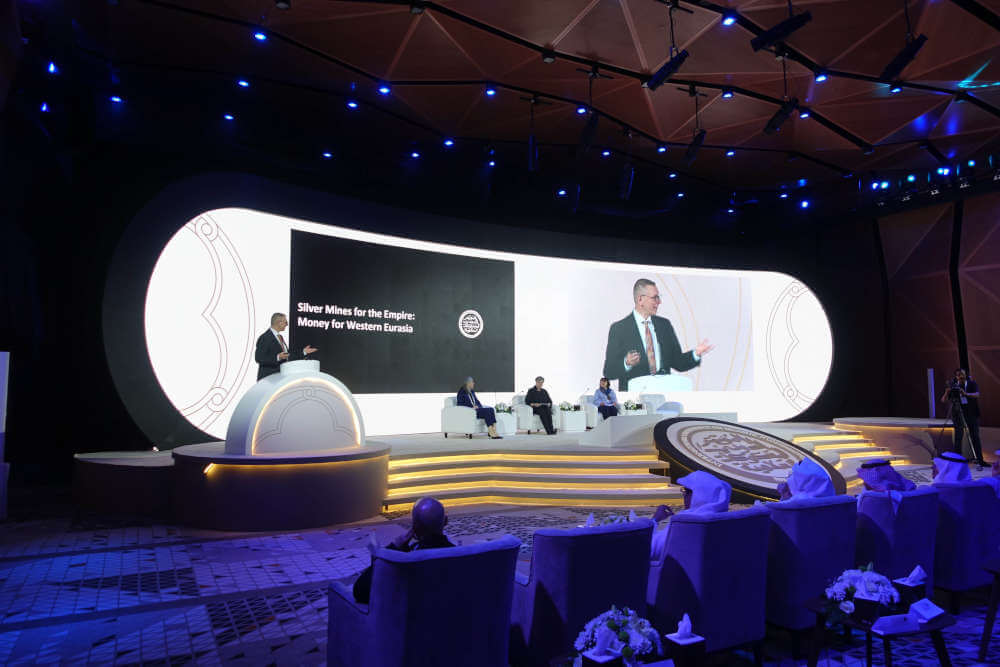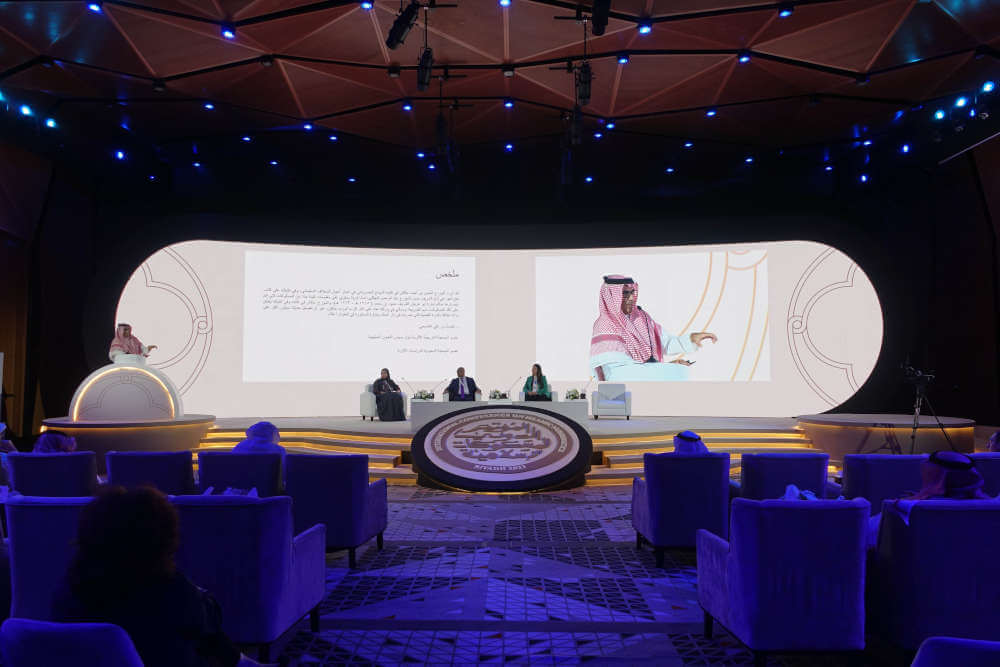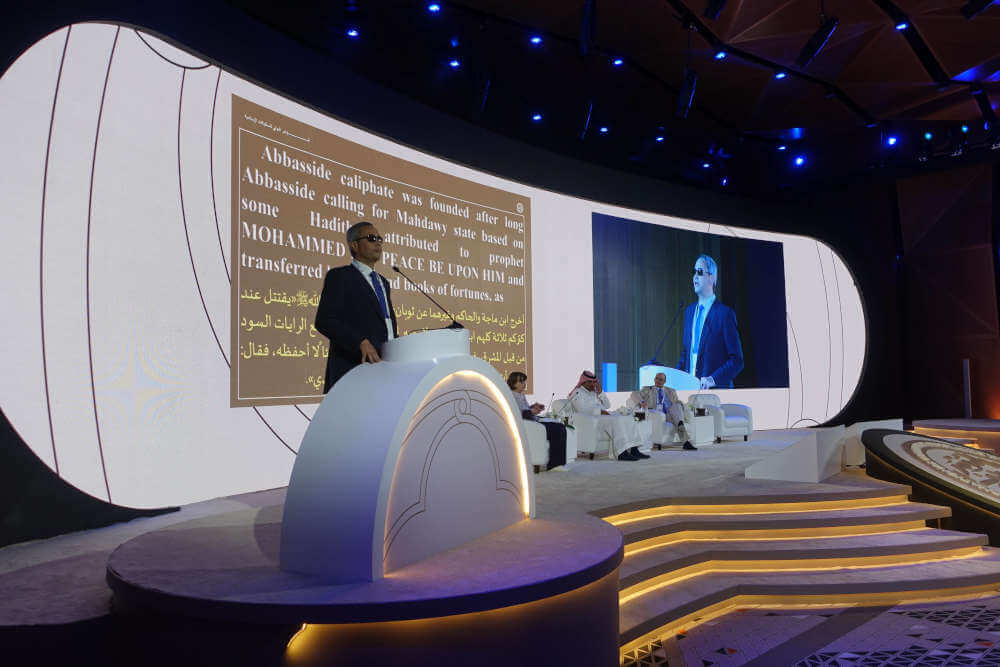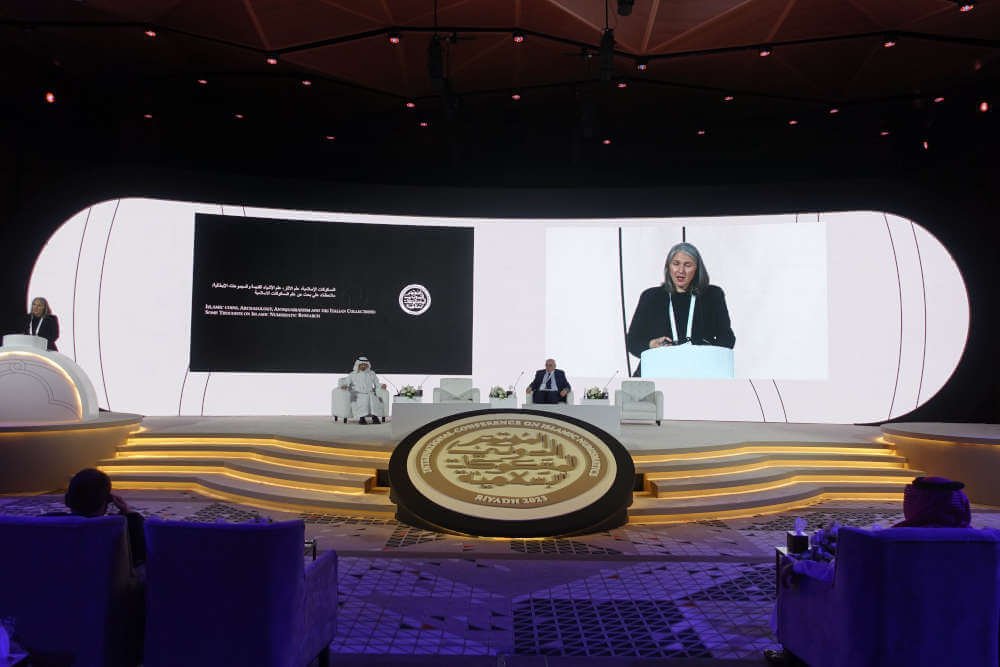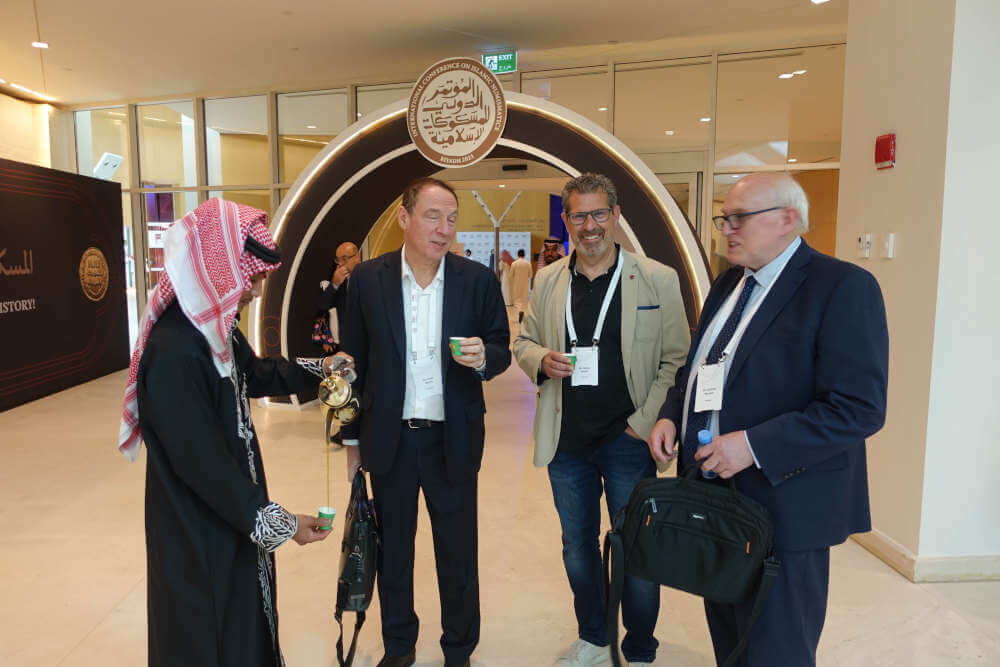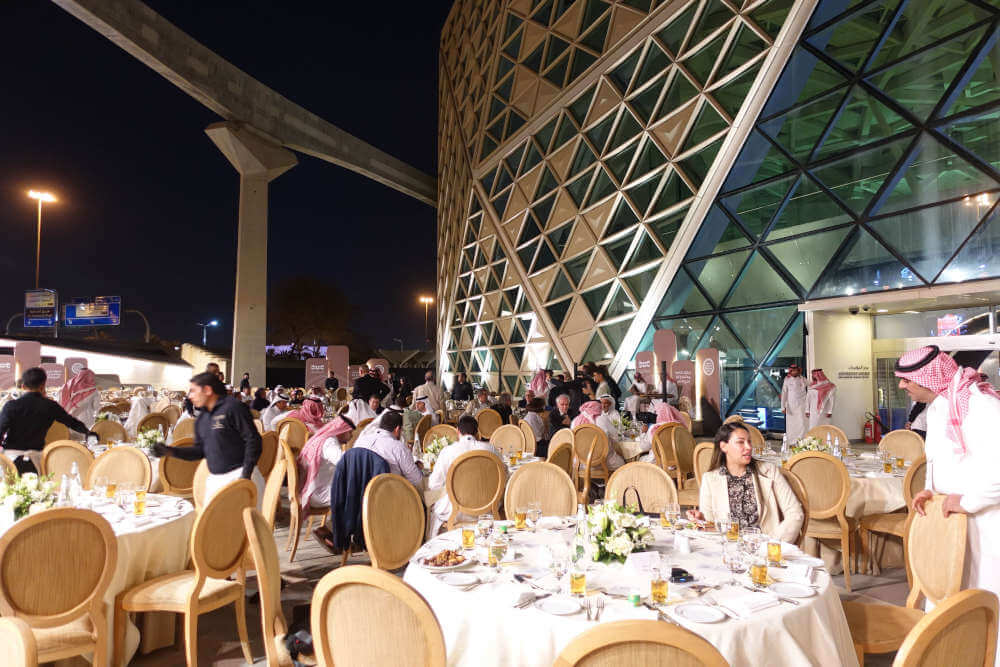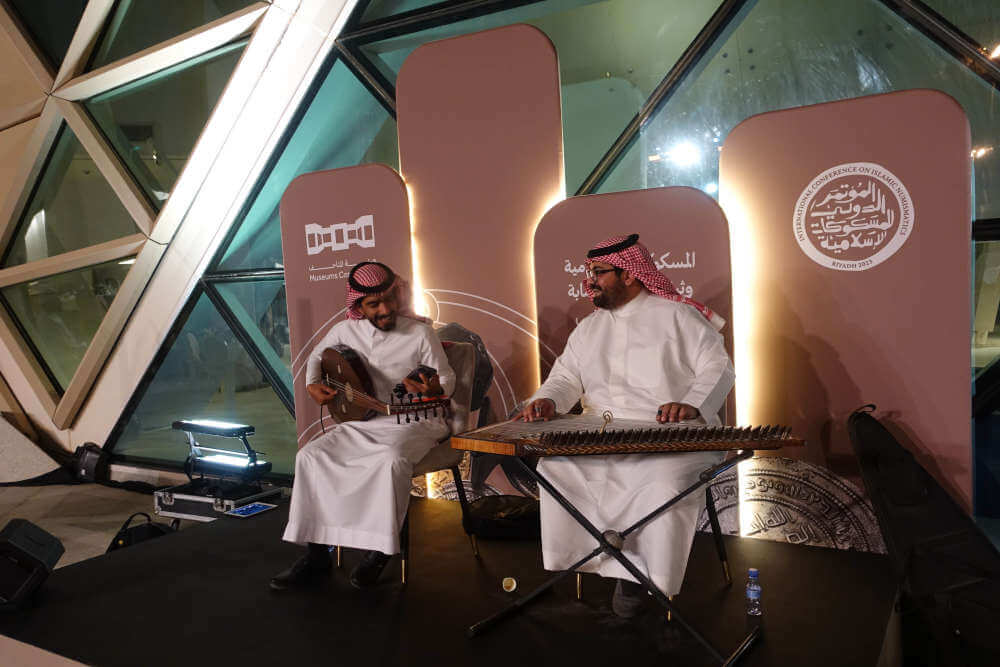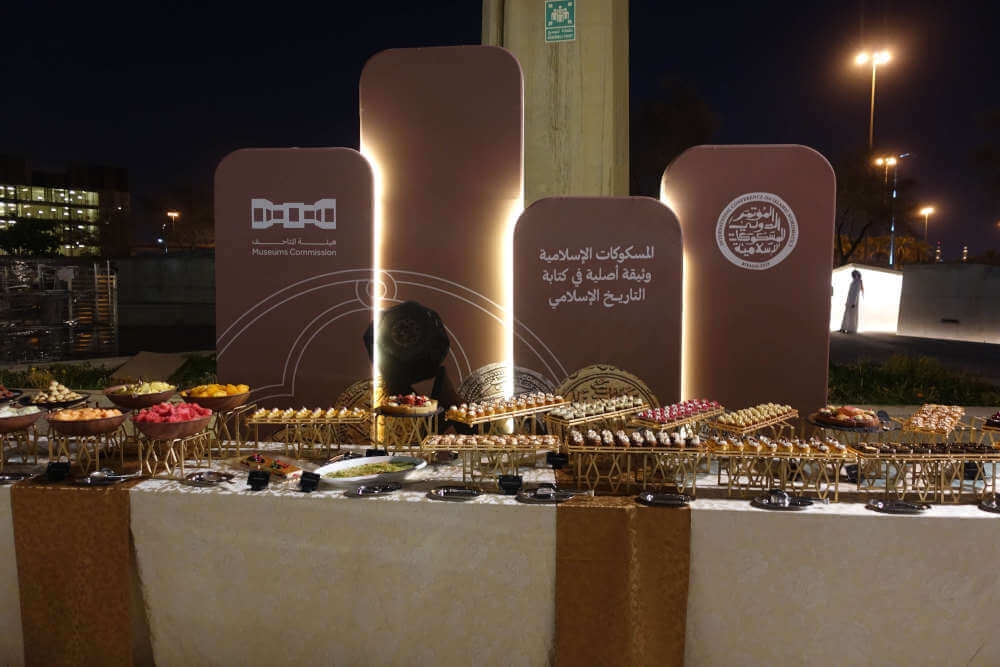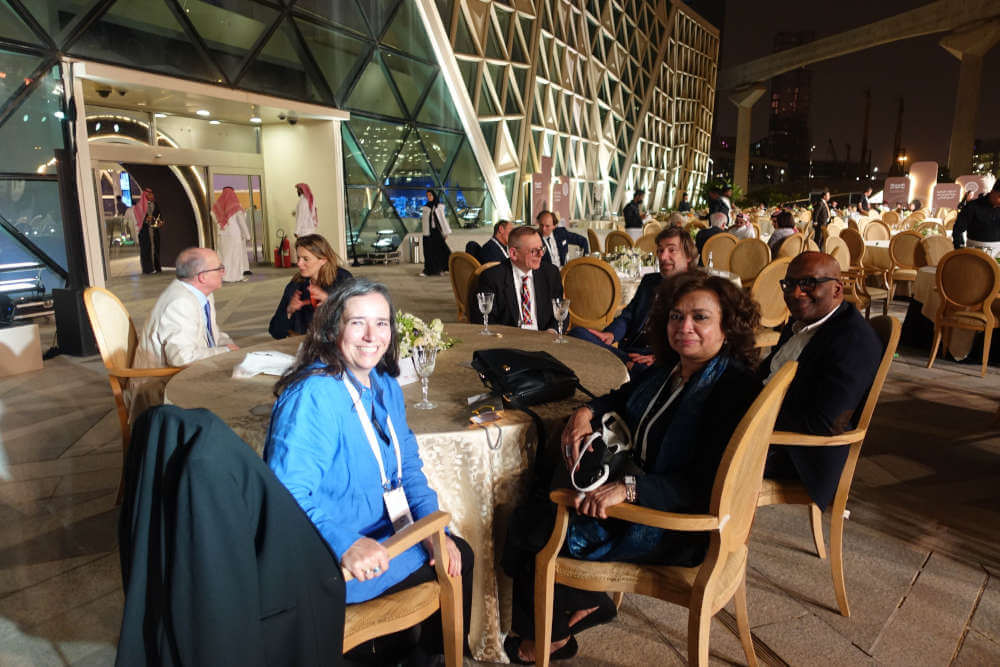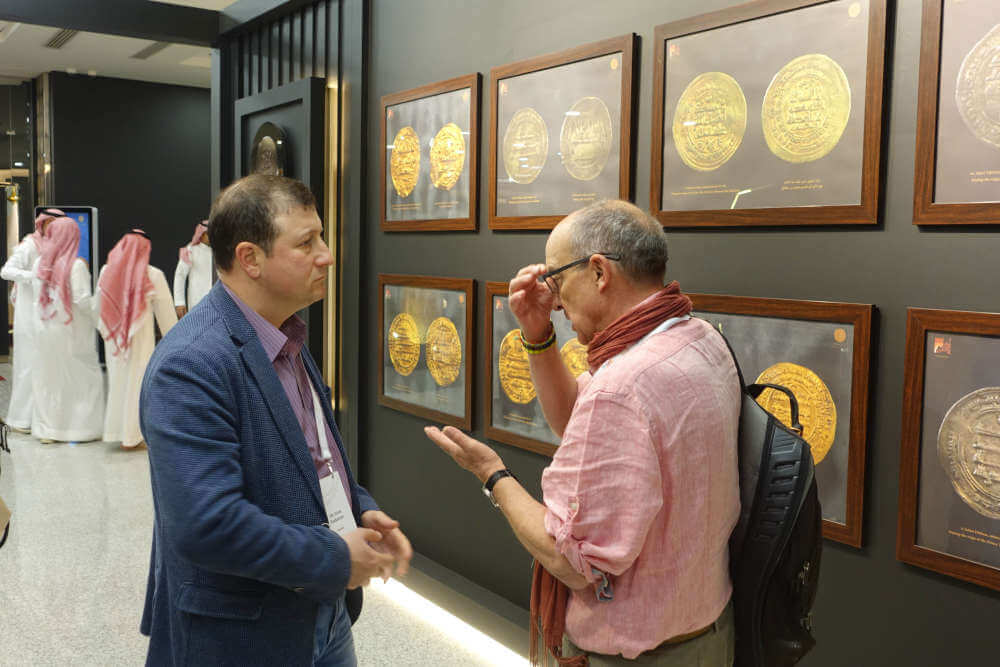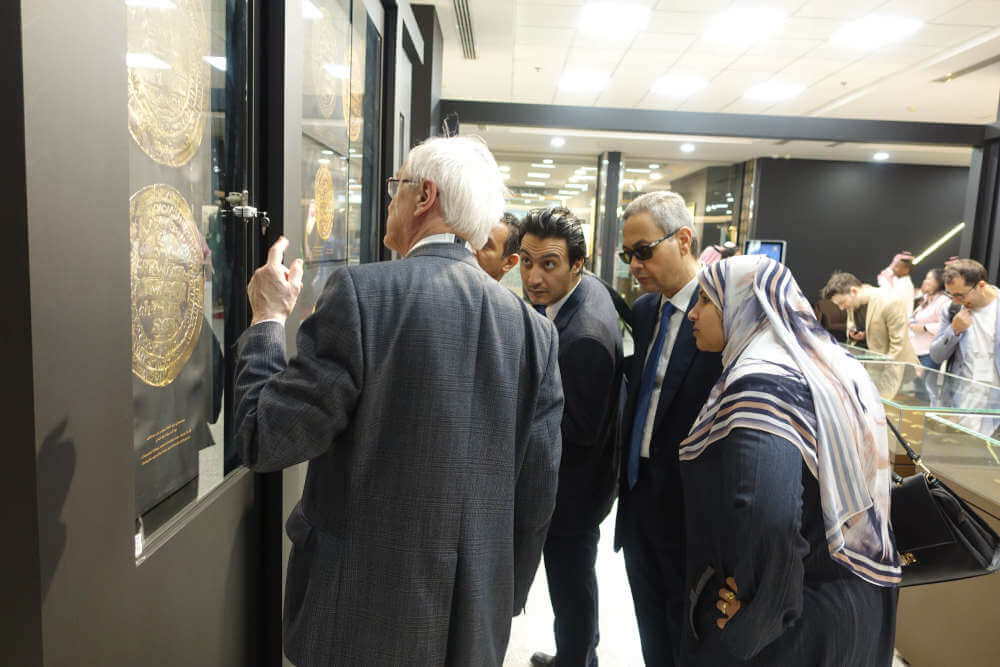International Conference on Islamic Numismatics
by Ursula Kampmann, translated by Maike Meßmann
Islamic numismatics has a problem – at least in Western countries. The number of researchers that focus on this field is constantly decreasing. And there is a good reason for it: job opportunities in this field are considerably inferior to those of all other branches of numismatics. This is due to the fact that many important institutions replaced the curators for Arab coins with experts in Roman numismatics. That is partly understandable because the West has closer historical ties to ancient Rome. But this development does not take into account that Arab coins represent a major share of coin hoards, especially regarding the early Middle Ages. On the Swedish island of Gotland, for example, 68,000(!) Islamic coins have been found to date. And yet there is no Swedish numismatist who specialises in identifying these pieces.
Content
A single beacon of hope is the Research Center for Numismatics in Tübingen (FINT). Thanks to the winning personality of Lutz Ilisch, his institute and his position have survived his retirement and have been filled with Sebastian Hanstein. Moreover, he successfully caused many young students of Islamic studies from across the globe to catch the numismatic bug (and learn to speak excellent German).
On the Arabian Peninsula and in other Islamic countries, on the other hand, a great interest in their own coinage history has evolved in recent years. Especially at the Department of Islamic Archaeology of the Fayoum University, numerous promising scholars have been trained in the last years under Dr Atef Mansour Ramadan. But also at other universities, there are many professors who devote their time to the study of coins. After all, they are one of the best sources for researching Arab history.
Moreover, there are many highly interested collectors in the Arab world, who are enthusiastic about Islamic coinage.
Last but not least, the Saudi Arabian Museums Commission exists in Riyadh. And this institution gathered experts from East and West for the first time at a major International Conference on Islamic Numismatics (ICIN) from 18 to 20 May 2023.
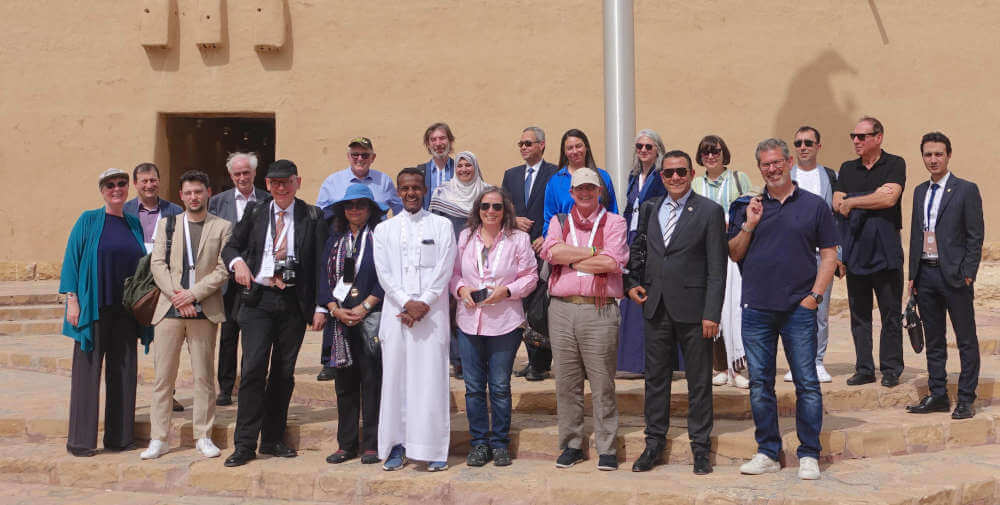
A small section of the speakers on their trip to Fort Masmak, which is considered the birthplace of modern Saudi Arabia. Photo: ©CoinsWeekly.
An Impressive Crowd of Specialists
It would probably be of little use to list all the participants of the conference at this point. After all, the average coin enthusiast does not even know the names of the most important experts in this field. So let us skip the list of names and instead talk about the countries the participants came from: Seven people each were from Egypt and Germany, where, as was mentioned above, the research centres for Islamic coins are currently located. Six speakers and, of course, the organisers were from Saudi Arabia. Next was Spain with two representatives and Armenia, Italy, Great Britain, Liechtenstein, Pakistan, Poland, Sweden, Switzerland and the United Emirates with one speaker each. In other words: 30 speakers and presenters came from 13 nations – a truly international conference!
The General Framework
This was probably the first numismatic conference ever to take place in such a glamorous context. The Museums Commission had booked rooms at the conference centre of the King Abdullah Financial District (KAFD) in Riyadh. Those who are used to Western standards of numismatic conferences were in awe of the luxurious atmosphere. Besides the gigantic lecture hall, there was a Speakers Launch, a VIP Launch and an exhibition area. Dozens of diligent helpers literally worked day and night to get everything ready in time. They had even thought of providing visitors with a souvenir – and I am not talking about the carefully chosen gift that every speaker received: visitors could have their picture taken and were presented with their photo in a design that had been specially created for this occasion.
By the way, there were no registration fees for visitors, which is why all 300 places were immediately booked out. Not all those who had registered did actually come, but numerous collectors travelled – some of them very far – to be part of this major numismatic event.
The Language Barrier
Right from the start, the fundamental problem of Islamic research became evident: only a single speaker from the West, Arianna d’Ottone, was able to switch from her first language or English to Arabic. The same applied to many older professors from the Arabian Peninsula: There was hardly anyone who spoke English well enough to want to take part in a discussion in that language. Their younger colleagues did their best to interpret but, of course, there were a lot of misunderstandings and ambiguities.
This language barrier has a significant impact on research. At times, non-expert listeners could get the impression that the issues that were discussed differed greatly depending on whether a member of the Arab or Western world was speaking. Although many remarks were made after every speech, there was hardly any real discussion. To put it scientifically: the event saw two completely different discourses, as if there were two parallel systems of Islamic numismatics.
Arab Hospitality
If you ask anyone who regularly attends conferences, they will say that the most important thing are not the presentations but what happens during the breaks and over dinner. In a relaxed atmosphere, highly demanding expert issues will be discussed with just as much enthusiasm as the small problems of everyday life. Congress breaks, trips and shared meals are essential for the development of the close network that researchers need to be able to work together effectively. Email addresses are exchanged, photos (of coins, of course!) sent back and forth, plans are made! (Yes, Alberto and Dorota, I think your idea about an international exchange of young students interested in Islamic numismatics is terrific! And yes, like many other participants, I would immediately get on board regarding an Islamic Numismatic Society.)
The framework provided by the Museums Commission for all these networking opportunities could not have been more perfect. Especially the gala dinner took us to the world of Thousand and One Nights with Arabic music, delicious specialties and a wonderful scenery under the night sky of Riyadh. In short, it was an unforgettable event for everyone who attended.
I found one thing particularly impressive, and this had nothing to do with numismatics. While – especially in the US – I am always annoyed about how carelessly food from buffets is being wasted, nothing was thrown away in Riyadh despite all the generosity. After the speakers, the congress participants and the organisers had finished eating, everyone else came. Those who had carried chairs around, guaranteed security, driven the cars, cleaned the toilets, served the speakers, prepared the food and rendered countless other services. They all feasted on the leftovers from the buffet, and I assume that they took home for their families all that they could not eat themselves.
This reminded me of something I had learned in Turkey once. I had been wondering why my host had ordered way too much food for the two of us. So he explained that this was custom in Turkey because, in the past, all the leftovers of the rich had been distributed among the poor. In Riyadh, this beautiful custom apparently still exists in a modernised form.
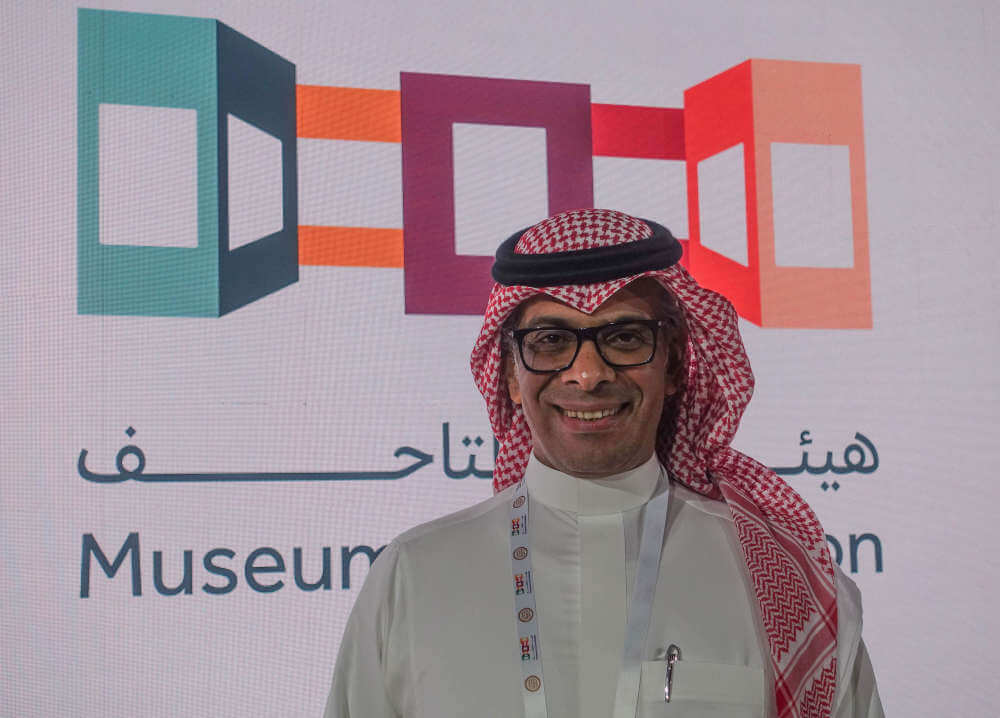
Majed Alotaibi of the Saudi Arabian Museums Commission was the spiritus rector behind the event. Without his enthusiasm, there would not have been an International Conference on Islamic Numismatics. Photo: UK.
A Great Achievement of the Saudi Arabian Museums Commission
I believe that everyone who attended the conference went back home with a rich palette of new impressions. They will slowly, very slowly, change Islamic numismatics, although this development might not be noticeable right away. Perhaps numismatists from the West will grow a little closer to those from Arabia and collaborate more often.
In any case, credit is due to the Saudi Arabian Museums Commission for bringing both groups in one room for the first time and making sure – through two simultaneous interpreters – that everyone was exposed to the lectures of the other group. Majed Alotaibi, whose passion for numismatics and whose energy were the reason why the Museums Commission decided to hold this conference, has decisively promoted Islamic numismatics by the mere fact that he created a platform where the different protagonists could meet.
Of course, three days cannot change the world altogether, but perhaps there will be another conference.
Hope for a Second International Conference on Islamic Numismatics
The proceedings of this conference are to be published, the recordings of the lectures will be made public online. And something else was interesting to see as well. During the congress, there was a change in how the participants referred to the event. While they had spoken of the “International Conference on Islamic Numismatic” first, this changed to the “First International Conference on Islamic Numismatics” by the end of the second day at the latest. And a “First International Conference” obviously calls for a “Second International Conference”. The participants would be immediately down for a continuation.
Wanted: A Patron for Islamic Numismatics
There is one thing that Islamic numismatics is still lacking: a patron, a country that takes care of this crucial branch of research. Islamic numismatics is at home on the Arabian Peninsula. Many historical details can only be understood through coins. Currently, many states of the Arab world are busy assembling enormous coin collections and making them available to the international public in museums or on websites. However, it would be much more important to give a home to Islamic numismatic studies. The field is in need of a host that organises regular conferences and a sponsor for a research institution that trains young people from the East AND the West, an institution that regularly holds summer schools where young numismatists from all over the world can meet in order to bring both worlds of Islamic numismatics closer together, and eventually combine them into one.
In short: building bridges!
And wherever bridges are being built, CoinsWeekly is happy to help.






